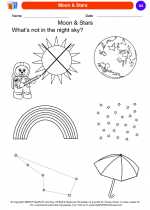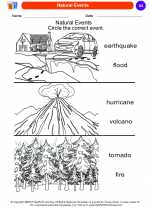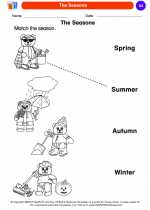Invertebrates
Invertebrates are animals that do not have a backbone or vertebral column. They make up the vast majority of animal species on Earth and are incredibly diverse in terms of their appearance, behavior, and habitat.
Types of Invertebrates
There are several major groups of invertebrates:
- Arthropods: This group includes insects, spiders, crustaceans, and other organisms with exoskeletons and jointed legs.
- Mollusks: Mollusks include animals such as snails, clams, and octopuses, and are characterized by their soft bodies and, in many cases, hard shells.
- Worms: This group includes annelids (segmented worms), flatworms, and other worm-like organisms.
- Cnidarians: Cnidarians are a group of animals that includes jellyfish, corals, and sea anemones, and are characterized by their radial symmetry and stinging cells.
- Echinoderms: Echinoderms include animals like sea stars and sea urchins, and are known for their spiny skin and radial symmetry.
Characteristics of Invertebrates
Invertebrates can vary widely in their appearance and habits, but they share some common characteristics:
- No Backbone: The defining feature of invertebrates is the absence of a vertebral column.
- Exoskeleton or Soft Body: Many invertebrates have an exoskeleton for support and protection, while others have soft bodies.
- Diverse Habitats: From the depths of the ocean to the forest floor, invertebrates can be found in nearly every habitat on Earth.
- Varied Diets: Some invertebrates are herbivores, while others are carnivores or omnivores, and they may feed on plants, other animals, or decaying matter.
Importance of Invertebrates
Invertebrates play crucial roles in ecosystems and are important for several reasons:
- Pollination: Many insects, such as bees and butterflies, are important pollinators for flowering plants.
- Decomposition: Invertebrates like earthworms and beetles help break down dead organic matter, contributing to nutrient cycling in ecosystems.
- Food Source: Invertebrates are a primary food source for many larger animals, including birds, fish, and mammals.
- Medical Research: Some invertebrates, such as horseshoe crabs, are used in medical research and the development of pharmaceuticals.
Study Guide
As you study invertebrates, consider the following questions:
- What are the major groups of invertebrates, and what are some examples of each?
- What are the defining characteristics of invertebrates?
- How do invertebrates contribute to ecosystems and the well-being of other organisms?
- What are some specific adaptations that different groups of invertebrates have for survival in their habitats?
By exploring these questions and learning about the incredible diversity of invertebrates, you'll gain a deeper understanding of these fascinating animals and their importance in the natural world.
[Invertebrates] Related Worksheets and Study Guides:
.◂Science Worksheets and Study Guides Kindergarten. Weather
Coloring Worksheet Calendar
Calendar  Coloring Worksheet
Coloring Worksheet Calendar
Calendar  Coloring Worksheet
Coloring Worksheet Day and Night
Day and Night  Coloring Worksheet
Coloring Worksheet Day and Night
Day and Night  Coloring Worksheet
Coloring Worksheet Exploring Weather
Exploring Weather  Coloring Worksheet
Coloring Worksheet Exploring Weather
Exploring Weather  Coloring Worksheet
Coloring Worksheet Look at the Clouds
Look at the Clouds  Coloring Worksheet
Coloring Worksheet Look at the Clouds
Look at the Clouds  Coloring Worksheet
Coloring Worksheet Moon & Stars
Moon & Stars  Coloring Worksheet
Coloring Worksheet Moon & Stars
Moon & Stars  Coloring Worksheet
Coloring Worksheet Natural Events
Natural Events  Coloring Worksheet
Coloring Worksheet Natural Events
Natural Events  Coloring Worksheet
Coloring Worksheet Sun and Shadows
Sun and Shadows  Coloring Worksheet
Coloring Worksheet Sun and Shadows
Sun and Shadows  Coloring Worksheet
Coloring Worksheet The Seasons
The Seasons  Coloring Worksheet
Coloring Worksheet The Seasons
The Seasons  Coloring Worksheet
Coloring Worksheet Things in the Sky
Things in the Sky  Coloring Worksheet
Coloring Worksheet Things in the Sky
Things in the Sky  Coloring Worksheet
Coloring Worksheet Weather Tools
Weather Tools  Coloring Worksheet
Coloring Worksheet Weather Tools
Weather Tools 

 Coloring Worksheet
Coloring Worksheet
 Coloring Worksheet
Coloring Worksheet
 Coloring Worksheet
Coloring Worksheet
 Coloring Worksheet
Coloring Worksheet
 Coloring Worksheet
Coloring Worksheet
 Coloring Worksheet
Coloring Worksheet
 Coloring Worksheet
Coloring Worksheet
 Coloring Worksheet
Coloring Worksheet
 Coloring Worksheet
Coloring Worksheet
 Coloring Worksheet
Coloring Worksheet
 Coloring Worksheet
Coloring Worksheet
 Coloring Worksheet
Coloring Worksheet
 Coloring Worksheet
Coloring Worksheet
 Coloring Worksheet
Coloring Worksheet
 Coloring Worksheet
Coloring Worksheet
 Coloring Worksheet
Coloring Worksheet
 Coloring Worksheet
Coloring Worksheet
 Coloring Worksheet
Coloring Worksheet
 Coloring Worksheet
Coloring Worksheet

The resources above cover the following skills:
EARTH AND SPACE SCIENCE (NGSS)
Earth’s Systems
Students who demonstrate understanding can:
Use and share observations of local weather conditions to describe patterns over time.